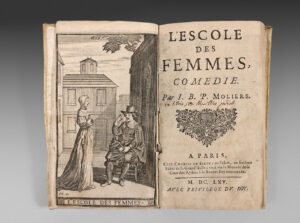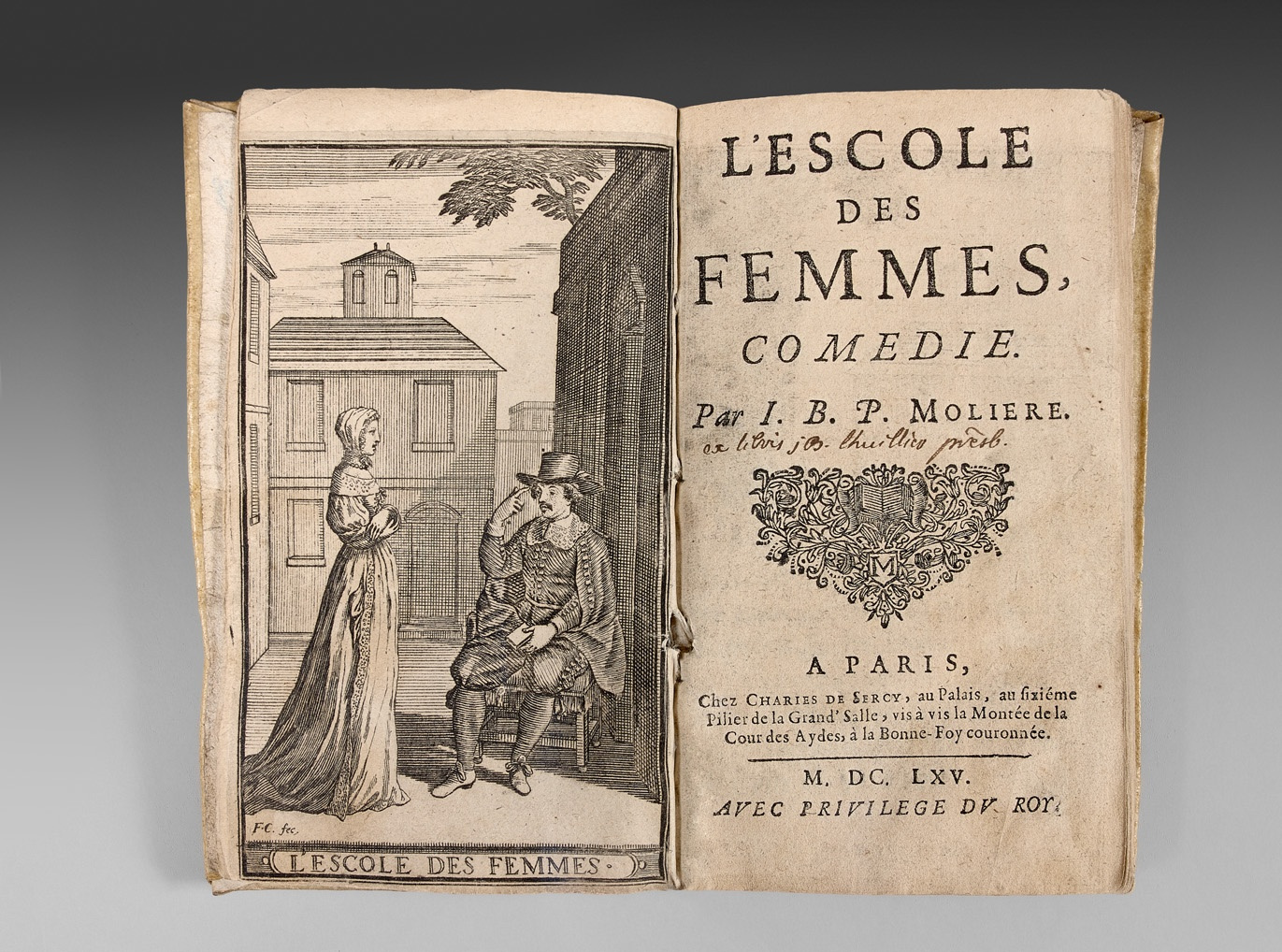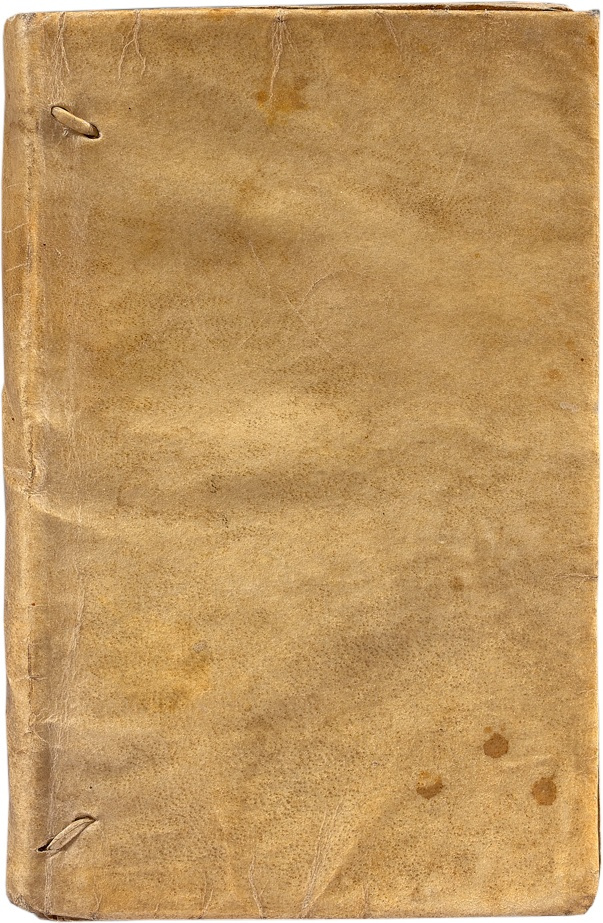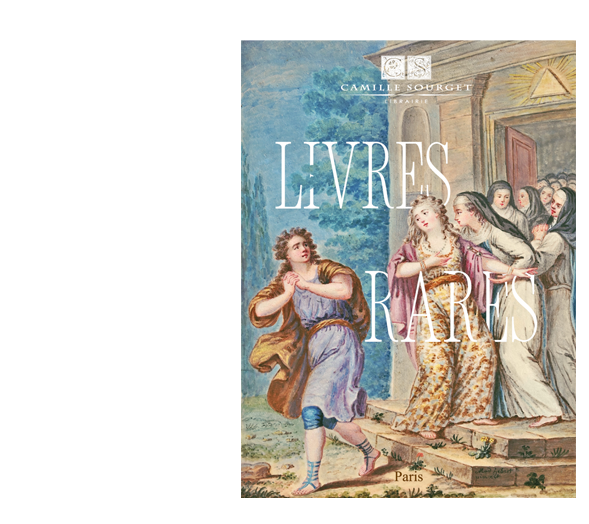Paris, chez Charles de Sercy, 1665.
12mo [140 x 83 mm] of (1) bl.l., (6) ll. including the engraving, 95 pp., (1) bl.l. Contemporary limp vellum binding, flat spine. Contemporary binding.
Second edition of Moliere’s first “great comedy”, which reproduces exactly the original edition.
Tchemerzine, IV, 775.
It was preceded by the first edition published in 1663 and several counterfeits.
The dedication to Madame is addressed to Henriette of England, Duchess of Orleans, wife of Monsieur, brother of the King.
“…a very important edition, not only because the woodcut represents Moliere and his wife, but also because the punctuation and accentuation of the text indicate the way in which Molière played out his roles. We can see that he himself presided over the scrupulous correction of the text” (Lacroix, Bibliographie moliéresque, p.8, about the first edition).
“The first performance of this play which had an outstanding success took place on December 26, 1662 at the Theater du Palais Royal .
Moliere had outdone himself. He had reached the making of a masterpiece not only by the perfection of his performance on stage, or by his qualities as a theater man but especially by a deep and precise analysis of the characters.
Married in the same year 1662 with Armande Béjart, he was already haunted by the fear of losing this newfound happiness. Carrying his anxieties on stage, his hopes, his joys, his natural vivacity and all the states of mind of the madly amorous man that he was, Moliere achieved with an amazing virtuosity an astonishing fresco of dialogues drawn from the observation of human feelings.
It was his triumph and it was also the beginning of his torments.
With the support of the King who, deep inside, probably wasn’t angry to see a comedian translate feelings that he felt but that his rank did not allow him to express without harming his prestige and his authority, Moliere didn’t hesitate to print l’Ecole des Femmes only four months (March 16, 1663) after the first performance.
He had preceded the play with a dedicatory Epistle to Madame, followed by a Preface, in which he cleverly replied by soft hints to the criticism which had been raised against him.
Never had the author so many enthusiastic approvals or so violent hostilities. “
(Guibert, Bibliographie des Œuvres de Molière, I, pp. 117-132).
The edition is illustrated with the precious frontispiece engraved by François Chauveau which represents the earliest portrait of Moliere.
But nothing allows us to assume, as Guibert did, that Moliere is represented with Armande Béjart, the young woman he just married. It is more likely that the frontispiece represents Moliere alongside the one who then holds the role of “l’ingénue”, his mistress, Mademoiselle de Brie.
Precious copy very pure preserved in its contemporary limp vellum binding.



